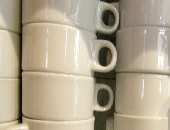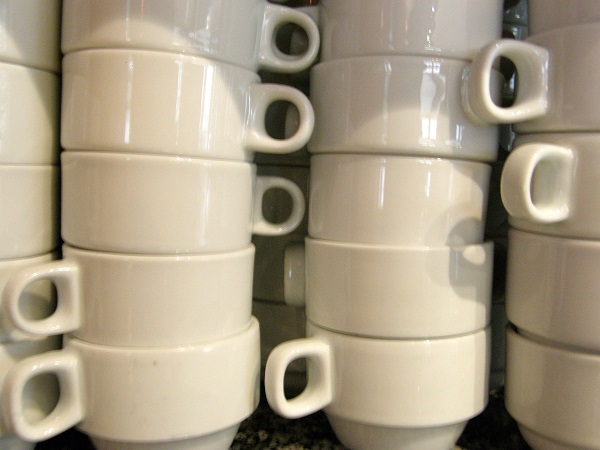“Me? Why do I have to pay for the falafels? I barely have two dollars to rub together,” said Morty. Tuesday is the two-for-one special at our local take-out Mediterranean shop.
“Take it from me—you’ll enjoy them more!” I said, tapping the article I had just been reading in the New York Times. In a nutshell, it reported on new research in the Journal of Consumer Research that said having some difficulty in payment increased the consumer’s connection with the item purchased.
He grabbed the section to read while we wolfed down our falafels. “You’ve gotta interview these people,” he declared. “I would have guessed the opposite. If you make it easier for people to pay, they will love you more.”
Fortunately, Avni Shah, Assistant Professor of Marketing at the University of Toronto, was available to give some insight into behavioural economics and the connection we feel to the stuff we buy. And, possibly, to the people we buy it for.
Q: Your article “Paper or Plastic? How We Pay Influences Post-Transaction Connection” describes the effect of the means of payment on consumer feelings toward the object purchased. What prompted your interest in this particular topic?
During grad school I would give myself a treat by going to get a latte at one of the coffee shops. one morning I somehow left my debit card at home. I had cash to pay for the latte, $3.50, and so I stopped at the Starbucks, took out my 5-dollar bill. I felt quite reluctant to get the money out. I didn’t feel that as much with the debit card. We call it the pain of payment. Later I was sitting there, really enjoying this coffee, thinking, “Why don’t I come here more often? The brew is really very good.”
What was so different about this particular experience? The only thing I could think of was typically I pay by debit card but that time I paid by cash. Could it be that payment method itself … influenced how much I enjoyed this particular drink?
As soon as I got to school I said, let me see what there is on this topic. I found the research is really focussed on the spending decision. People find that you spend less when you use cash. Nobody spoke to what happens afterwards. What do we do, when we’ve gone through this process of buying, with these different forms that change the way we feel? That set me down this pathway – I’ve been running a series of experiments and studies geared toward this very question.
Q: Please describe the experiments.
I sold mugs, regular coffee mugs. They were initially $6.95 at the bookstore. I sold them for $2 because I had to offer a discount to get people to buy these. What I varied was: for one group I said, you’re going to have to pay cash. I can’t accept any other form of payment. With the other half I said you have to pay by card. I can only take credit card, debit card, or the student card that’s commonly used on campus. Nearly one hundred people bought the mugs. Two hours later I came back to them and said, “I’m really sorry, but I made a mistake, I need to buy the mug back from you. Name your price.”
The idea here is that if you really value something more then you’re going to name a higher price.
On average, the card people wanted $3.83 back. On the other hand, the cash people asked for $6.71 back. That’s about a $3 difference. So both groups valued this particular purchase, but the people with the cash were valuing their mug a lot more, even after just 2 hours. The people who paid cash were really very reluctant and almost upset that I was taking their mugs back! I took down their offer, and I had them answer 2 or 3 questions about how emotionally attached they felt to the mug. (At the end, to all the people I said, “Here’s your initial $2 back and you can keep your mug”—I’m not a mean person!)
When they made the purchase by cash, it was quite painful and then that, in turn, led to the thought “Hey, I must be undergoing this pain for some reason. It must be because I value this good more.” Taking a cue from this psychological pain they were imbuing the object itself with value.
One criticism you could have of this work is you could say, “Two dollars is not always two dollars.” If you pay by cash it’s $2 plus the cost of walking to the ATM—the inconvenience. And frankly some people enjoy spending $2 on their card because they get reward points or they get cash back.
Q: So you ran other experiments?
Next, I ran an experiment in the lab. I had my research assistant give people either $5 in cash or a $5 voucher and tell them, you can choose one out of three charities to donate to. I said, “as soon as you are done filling out these questions, come and give your pamphlet and the information sheet to the front and the research assistant will help you.” After they brought their information to the front of the lab, the research assistant said, “As a token of appreciation the charity is going to give you a ribbon lapel pin.” The lapel pin was identical for the three charities, except for the colour of the ribbon: the AIDS institute was red, green for an environmental agency, and purple for cancer research.
One week following their participation in the study, I sent them a single question: “did you wear your lapel pin, yes or no?” I wanted to know: does the method of payment … make them more likely to publically signal support for a cause? Lo and behold, of those who donate by voucher, 13.8 percent wore their lapel pin one week following their participation in the study. In contrast, with the cash folks it was 51.3 percent.
Q: That’s a huge difference.
I wasn’t able to check, of course, that they were actually wearing it, but you could tell when people were leaving the lab. The cash people were putting the lapel pin on their backpacks, on their shoes, on their jacket. The voucher people tended to say, “it was not my money, this was the institution’s money, I was just figuring out where it was going to go.” The cash people tended to say, “this is my money, I donated it.” It was not even their money, how could they feel this? That’s a very rational economic question, but humans have this rehearsal process. If I tell you, make a good decision with this 10 dollars, even if it’s not your money, I think you still will because it feels more real. ª


